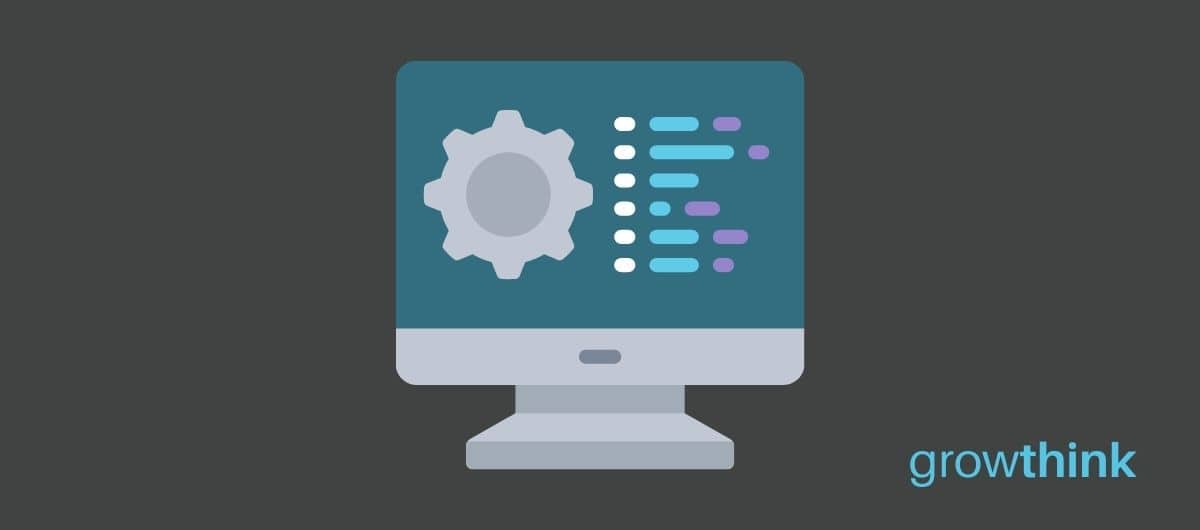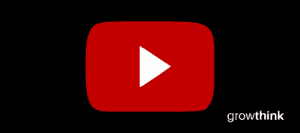Over the past 10+ years, we have helped over 1,000 entrepreneurs and business owners create business plans to start and grow their blogging companies.
If you’re unfamiliar with creating a blogging business plan, you may think creating one will be a time-consuming and frustrating process. For most entrepreneurs it is, but for you, it won’t be since we’re here to help. We have the experience, resources, and knowledge to help you create a great business plan.
In this article, you will learn some background information on why business planning is important. Then, you will learn how to write a blogging business plan step-by-step so you can create your plan today.
What is a Blogging Business Plan?
A business plan provides a snapshot of your blogging business as it stands today, and lays out your growth plan for the next five years. It explains your business goals and your strategies for reaching them. It also includes market research to support your plans.
Why You Need a Business Plan for a Blogging Business
If you’re looking to start a blogging business or grow your existing blogging company, you need a business plan. A business plan will help you raise funding, if needed, and plan out the growth of your blogging business to improve your chances of success. Your blogging business plan is a living document that should be updated annually as your company grows and changes.
Sources of Funding for Blogging Businesses
With regard to funding, the main sources of funding for a blogging business are personal savings, credit cards, bank loans, and angel investors. When it comes to bank loans, banks will want to review your business plan and gain confidence that you will be able to repay your loan and interest. To acquire this confidence, the loan officer will not only want to ensure that your financials are reasonable, but they will also want to see a professional plan. Such a plan will give them the confidence that you can successfully and professionally operate a business. Personal savings and bank loans are the most common funding paths for blogging companies.
Finish Your Business Plan Today!
If you’d like to quickly and easily complete your business plan, download Growthink’s Ultimate Business Plan Template and complete your plan and financial model in hours.
How to Write a Business Plan for a Blogging Business
If you want to start a blogging business or expand your current blogging business, you need a business plan. The guide below details the necessary information for how to write each essential component of your blogging business plan.
Executive Summary
Your executive summary provides an introduction to your business plan, but it is normally the last section you write because it provides a summary of each key section of your plan.
The goal of your executive summary is to quickly engage the reader. Explain to them the kind of blogging business you are running and the status. For example, are you a startup, do you have a blogging business that you would like to grow, or are you creating a multi-blogging business?
Next, provide an overview of each of the subsequent sections of your plan.
- Give a brief overview of the blogging industry.
- Discuss the type of blogging business you are operating.
- Detail your direct competitors. Give an overview of your target customers.
- Provide a snapshot of your marketing strategy. Identify the key members of your team.
- Offer an overview of your financial plan.
Company Overview
In your company overview, you will detail the type of blogging business you are operating.
For example, you might specialize in one of the following types of blogging businesses:
- Lifestyle Blogging: Designed to relate to a large audience, lifestyle blogging can include personal lifestyle choices, design, career choices and any number of life activities.
- Parent Blogging: The subject of parenting is a critical one and a blog can be followed by millions. This type of blog typically refers to parenting in general or may be categorized by the ages of the children. Often humorous, parenting blogs offer ongoing advice and suggestions for day-to-day living with children.
- Business Blogging: This type of blogging business is focused on professionals who want to know the backstory to the business headlines. Millions of people follow bloggers who specialize in finance, wealth generation and other subjects of great interest to the public.
- Politics and News Blogging: From well-known politicians to those who are entering the political realm, bloggers are followed by multi-millions of people interested in the subjects of the day and how those subjects interact in their own lives.
In addition to explaining the type of blogging business you will operate, the company overview needs to provide background on the business.
Include answers to questions such as:
- When and why did you start the business?
- What milestones have you achieved to date? Milestones could include the number of followers obtained, the amount of revenue from subscriptions during the past six months, opening a multi-blogging business, etc.
- Your legal business structure. Are you incorporated as an S-Corp? An LLC? A sole proprietorship? Explain your legal structure here.
Industry Analysis
In your industry or market analysis, you need to provide an overview of the blogging industry.
While this may seem unnecessary, it serves multiple purposes.
First, researching the blogging industry educates you. It helps you understand the market in which you are operating.
Secondly, market research can improve your marketing strategy, particularly if your analysis identifies market trends.
The third reason is to prove to readers that you are an expert in your industry. By conducting the research and presenting it in your plan, you achieve just that.
The following questions should be answered in the industry analysis section of your blogging business plan:
- How big is the blogging industry (in dollars)?
- Is the market declining or increasing?
- Who are the key competitors in the market?
- Who are the key suppliers in the market?
- What trends are affecting the industry?
- What is the industry’s growth forecast over the next 5 – 10 years?
- What is the relevant market size? That is, how big is the potential target market for your blogging business? You can extrapolate such a figure by assessing the size of the market in the entire country and then applying that figure to your local population.
Customer Analysis
The customer analysis section of your blogging business plan must detail the customers you serve and/or expect to serve.
The following are examples of customer segments: individuals interested in niche subjects, businesses looking to monetize blogs, businesses seeking collaborations, and those seeking entertainment.
As you can imagine, the customer segment(s) you choose will have a great impact on the type of blogging business you operate. Clearly, individuals interested in niche blogs will respond differently to marketing promotions than will a business seeking collaborations, for example.
Try to break out your target customers in terms of their demographic and psychographic profiles. With regard to demographics, including a discussion of the ages, genders, locations, and income levels of the potential customers you seek to serve.
Psychographic profiles explain the wants and needs of your target customers. The more you can recognize and define these needs, the better you will do in attracting and retaining your customers.
Finish Your Blogging Business Plan in 1 Day!
Don’t you wish there was a faster, easier way to finish your business plan?
With Growthink’s Ultimate Business Plan Template you can finish your plan in just 8 hours or less!
Competitive Analysis
Your competitive analysis should identify the indirect and direct competitors your business faces and then focus on the latter.
Direct competitors are other blogging businesses.
Indirect competitors are other options that customers have to purchase from that aren’t directly competing with your product or service. This includes other forms of publications, such as newspapers, magazines, and direct-to-consumer flyers. You need to mention such competition, as well.
For each direct competitor, provide an overview of their business and document their strengths and weaknesses. Unless you once worked at your competitors’ businesses, it will be impossible to know everything about them. But you should be able to find out key things about them such as
- What types of customers do they serve?
- What type of blogging business are they?
- What is their pricing (premium, low, etc.)?
- What sets their business apart from others?
- What are their weaknesses?
With regard to the last two questions, think about your answers from the customers’ perspective. And, don’t be afraid to ask your competitors’ customers what they like most and least about them.
The final part of your competitive analysis section is to document your areas of competitive advantage. For example:
- Will you provide options for upgrading subscriptions?
- Will you offer products or services that your competition doesn’t?
- Will you provide better audience participation or feedback options?
- Will you offer better pricing?
Think about ways you will outperform your competition and document them in this section of your plan.
Marketing Plan
Traditionally, a marketing plan includes the four P’s: Product, Price, Place, and Promotion. For a blogging business plan, your marketing strategy should include the following:
Product: In the product section, you should reiterate the type of blogging company that you documented in your company overview. Then, detail the specific products or services you will be offering. For example, will you provide humorous reels about teen behaviors for parents aged 38-50?
Price: Document the prices you will offer and how they compare to your competitors. Essentially in the product and price sub-sections of your plan, you are presenting the products and/or services you offer and their prices.
Place: Place refers to the site of your blogging company. Document where your company is situated and mention how the site will impact your success. For example, is your blogging business located in a major U.S. city or is it situated on a farm in South Dakota? Depending on your blog subject matter, your company location could be in the ideal location for your customers.
Promotions: The final part of your blogging marketing plan is where you will document how you will drive potential customers to your location(s). The following are some promotional methods you might consider:
- Advertise in news outlets
- Reach out to other bloggers who create collaborative content
- Engage in article-writing using SEO with target keywords
- Engage in email marketing
- Create a complementary website that drives traffic to your blog
Finish Your Business Plan Today!
If you’d like to quickly and easily complete your business plan, download Growthink’s Ultimate Business Plan Template and complete your plan and financial model in hours.
Operations Plan
While the earlier sections of your business plan explained your goals, your operations plan describes how you will meet them. Your operations plan should have two distinct sections as follows.
Everyday short-term processes include all of the tasks involved in running your blogging business, including answering calls, planning and scheduling blogs, researching blog subjects, engaging with followers, etc.
Long-term goals are the milestones you hope to achieve. These could include the dates when you expect to monetize your blog, or when you hope to reach $X in revenue. It could also be when you expect to expand your blogging business to a multi-blogging business.
Management Team
To demonstrate your blogging business’ potential to succeed, a strong management team is essential. Highlight your key players’ backgrounds, emphasizing those skills and experiences that prove their ability to grow a company.
Ideally, you and/or your team members have direct experience in managing blogging businesses. If so, highlight this experience and expertise. But, also highlight any experience that you think will help your business succeed.
If your team is lacking, consider assembling an advisory board. An advisory board would include 2 to 8 individuals who would act as mentors to your business. They would help answer questions and provide strategic guidance. If needed, look for advisory board members with experience in a blogging business or successfully running a blogging business that was monetized or became a subscriber-serviced blog.
Financial Plan
Your financial plan should include your 5-year financial statement broken out both monthly or quarterly for the first year and then annually. Your financial statements include your income statement, balance sheet, and cash flow statements.
Income Statement
An income statement is more commonly called a Profit and Loss statement or P&L. It shows your revenue and then subtracts your costs to show whether you turned a profit or not.
In developing your income statement, you need to devise assumptions. For example, will you serve 10,000 followers within 3 months, and/or offer special subscriptions? And will sales grow by 2% or 10% per year? As you can imagine, your choice of assumptions will greatly impact the financial forecasts for your business. As much as possible, conduct research to try to root your assumptions in reality.
Balance Sheets
Balance sheets show your assets and liabilities. While balance sheets can include much information, try to simplify them to the key items you need to know about. For instance, if you spend $50,000 on building out your blogging business, this will not give you immediate profits. Rather it is an asset that will hopefully help you generate profits for years to come. Likewise, if a lender writes you a check for $50,000, you don’t need to pay it back immediately. Rather, that is a liability you will pay back over time.
Cash Flow Statement
Your cash flow statement will help determine how much money you need to start or grow your business, and ensure you never run out of money. What most entrepreneurs and business owners don’t realize is that you can turn a profit, but run out of money and go bankrupt.
When creating your Income Statement and Balance Sheets be sure to include several of the key costs needed in starting or growing a blogging business:
- Cost of computer equipment
- Cost of technical support and photography equipment
- Cost of furnishings
- Payroll or salaries paid to staff
- Business insurance
- Taxes
- Other start-up expenses (if you’re a new business) like legal expenses, permits, computer software, office supplies and equipment
Appendix
Attach your full financial projections in the appendix of your plan, along with any supporting documents that make your plan more compelling. For example, you might include your office location lease or a list of friends and associates who are already lined up to appear or create content with you.
Summary
Writing a business plan for your blogging business is a worthwhile endeavor. If you follow the template above, by the time you are done, you will truly be an expert. You will understand the blogging industry, your competition, and your customers. You will develop a marketing strategy and will understand what it takes to launch and grow a successful blogging business.
Finish Your Blogging Business Plan in 1 Day!
Don’t you wish there was a faster, easier way to finish your Blogging business plan?
With Growthink’s Ultimate Business Plan Template you can finish your plan in just 8 hours or less!
OR, Let Us Develop Your Plan For You
Since 1999, Growthink has developed business plans for thousands of companies who have gone on to achieve tremendous success.
See how Growthink’s business plan writers can create your business plan for you.
Other Helpful Business Plan Articles & Templates


 SaaS Business Plan Template
SaaS Business Plan Template Software Company Business Plan Template
Software Company Business Plan Template YouTube Business Plan Template
YouTube Business Plan Template